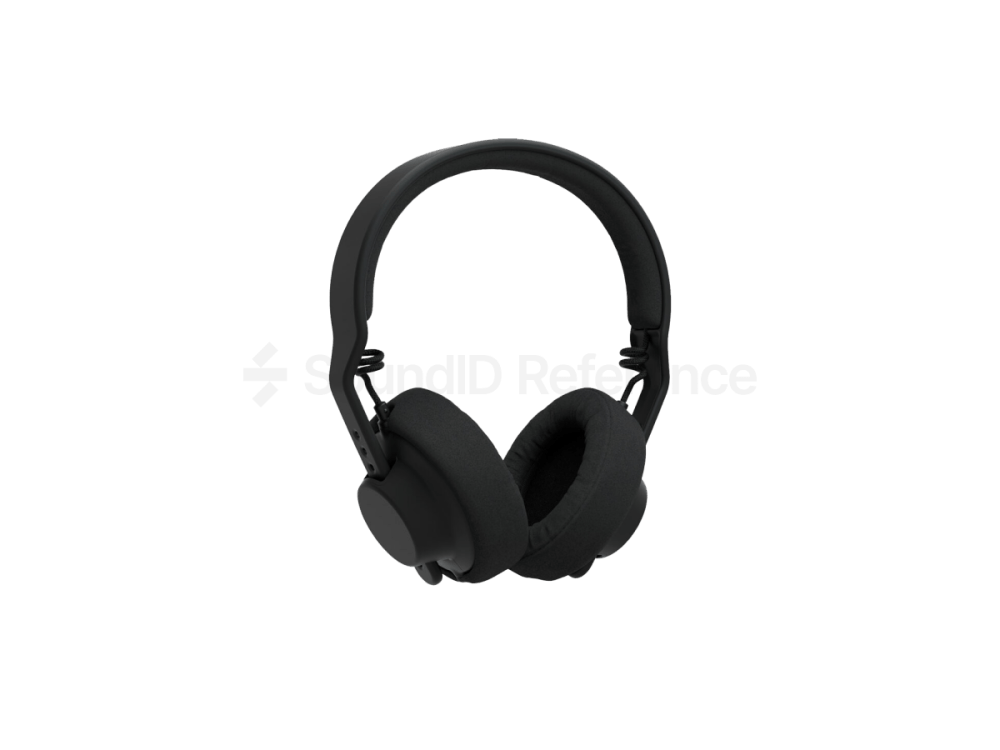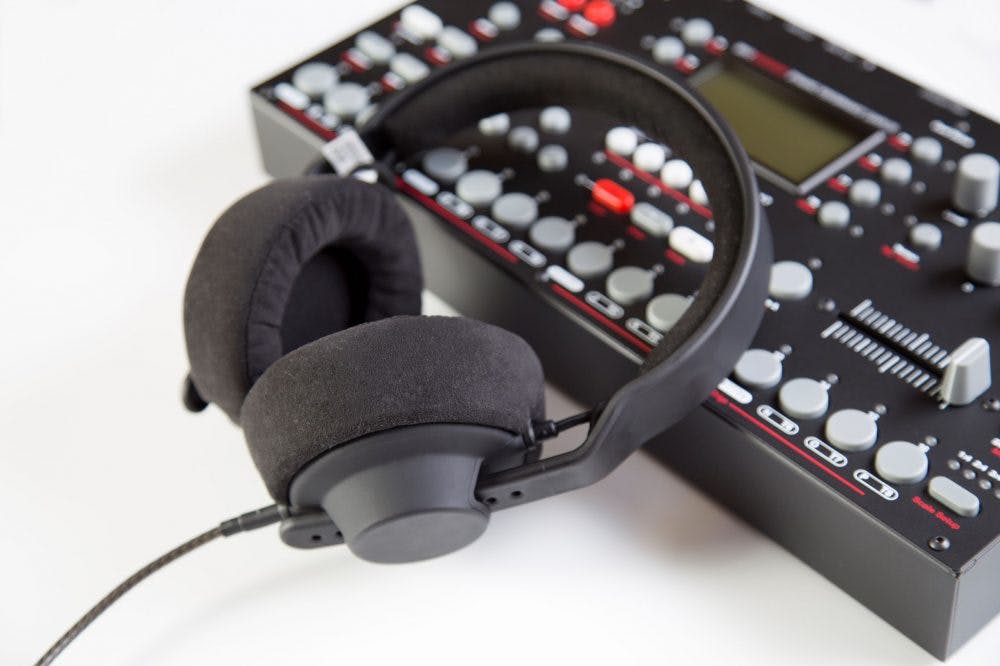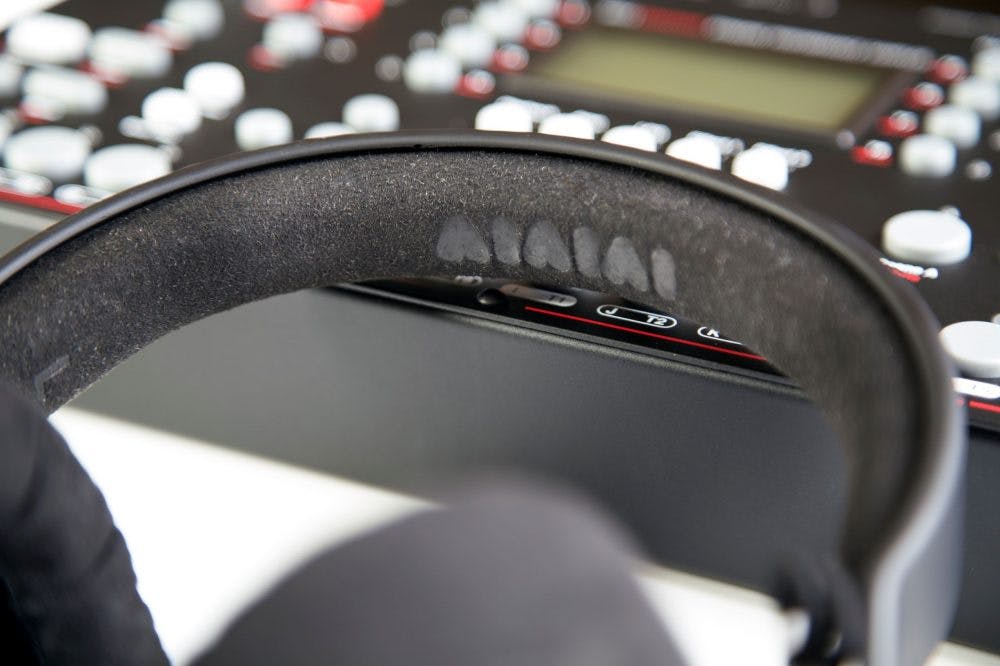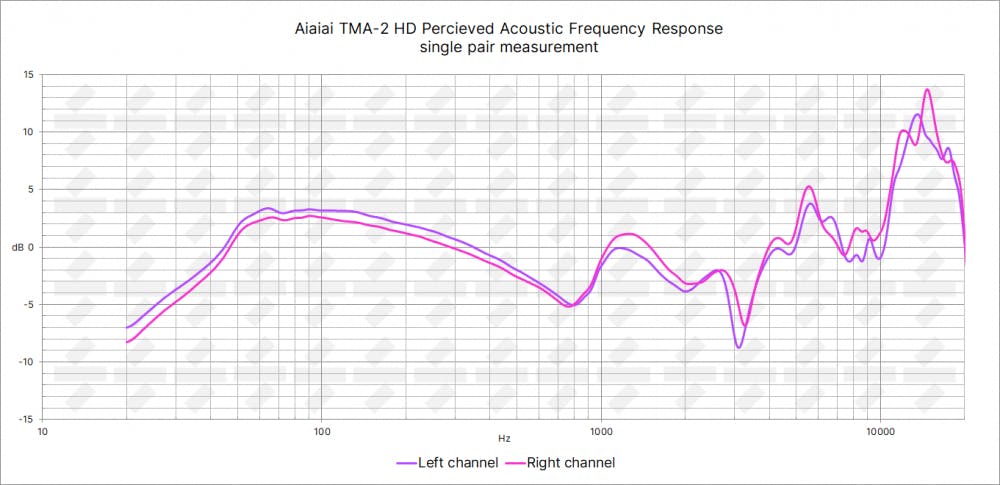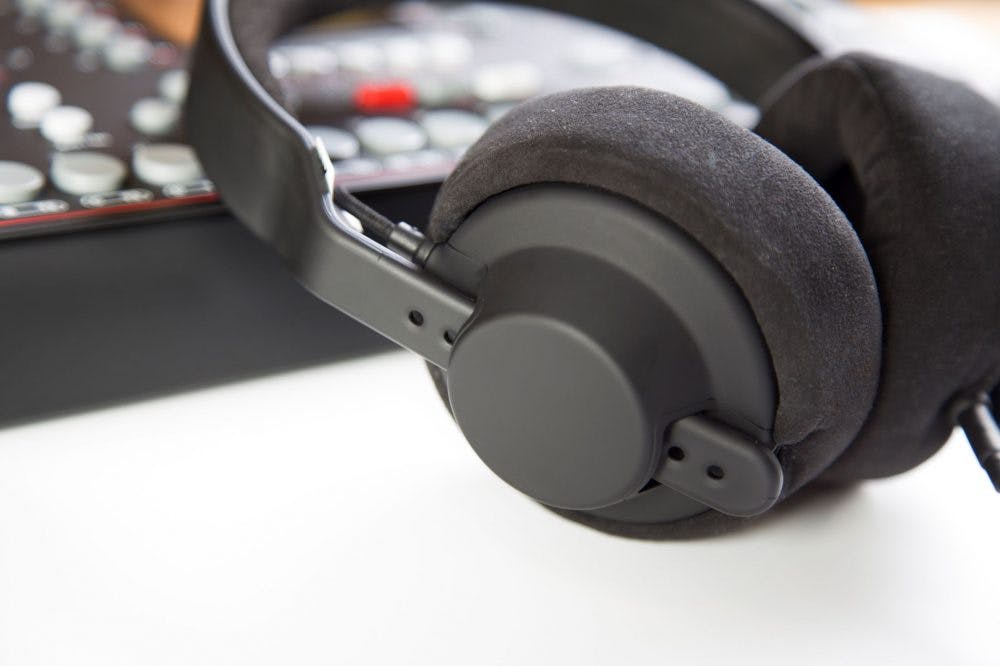With the second generation of TMA headphones, Aiaiai has taken a unique approach. They now manufacture numerous cross-compatible parts, enabling you to build up custom headphones by picking the parts you want. This allows you to easily replace the worn-out parts or even add Bluetooth receiver capability by switching out the headband. There are numerous custom configurations possible or alternatively, 7 specific use-case optimized presets to choose from. We’ll review the TMA-2 HD preset, which is marketed by Aiaiai as the most neutral-sounding one.
- Lightweight
- Easily available replacement parts
- Excellent adaptiveness
- Easy to drive
Pros list with SoundID Reference calibration
- Neutral frequency response
- Increased low-end extension
- Not the greatest channel balance
- Makes noises when handled
That’s uncommon for pro-grade headphones to have such a low impedance of 32Ω. This means that no mobile device should have any issues driving TMA-2 HD’s to more than sufficient volume, even with calibration and safe headroom engaged.
Both headband and ear cups are made from lightweight plastic with a rubber-like coating that feels great to touch and enables the headphones to weigh less than 200 grams. The headband has microfiber padding and ear pads are covered in gentle Alcantara, both materials feel very similar and are pleasant to touch. On a less positive note, when handling the headphones, you’ll get all kinds of squeaking and cracking noises from the ear cup – headband interface. That offsets the relatively luxurious impression provided by nice-feeling materials and makes the build feel a bit cheap.
The easily available spare parts aid longevity and drive the build quality score up.
According to Aiaiai, the TMA-2 HD preset is equipped with the most neutral-sounding drivers they have on offer. It’s a massive improvement over TMA-1 Studio but still has issues to solve. It helps that there are no high amplitude resonant peaks in the range up to 10kHz, so the sound isn’t harsh or boomy, but the huge high frequency boost above 10k makes it overly bright. All these shortcomings can be easily erased by calibration.
For most pairs channels were evenly matched, but for a few, there were inconsistencies in the low end of about 2.5dB which is a noticeable difference for a trained listener. However, this flaw can be addressed with individual calibration service, and since on other fronts TMA-2 HDs perform great, that is a worthwhile investment.
The clamping force is on the light side – that helps comfort but also lets outside noise in and makes the noise isolation very weak for a closed-back set. The contact points feel very comfy at first and the low weight surely helps, but the ear pads, at least for large pinnas, get slightly annoying sooner than expected. This is due to the volume inside the ear pads not being large enough to fully accommodate a large outer ear, and the pressure, even if it’s a gentle one, gets tiring for the ears. Nevertheless, testers with average size and smaller pinnas found them to be comfortable for extended sessions.
At €300 they’re not cheap headphones, but once calibrated, there’s very little left to complain about. Add the benefits of the modular design and the price seems fairly adequate. The biggest factor that hurts the value score is the suboptimal left-to-right channel consistency.
As with virtually all modern studio headphones, any distortion worth mentioning is only down low in the sub bass range and even that doesn’t translate to perceivable artefacts.
How accurate and consistent is the correction effect among different listeners?TMA-2 HDs perform exceptionally well when it comes to delivering virtually the same frequency response to a wide range of listeners and are among the top closed-backs in this regard, outperformed only by Focal Listen Professional.
How much do they differ pair to pair in terms of frequency response?Our measurements show that pair-to-pair consistency is not as great as some Beyerdynamic or Sennheiser models, yet still falls in the +/-3dB range for most of the frequency spectrum and there were no extreme outliers in our sample pool.
Rating
Conclusion
TMA-2 HDs are a massive upgrade over their predecessor TMA-1 Studio and are now a pair of very solid headphones that we can recommend for production and mixing in the studio or on the go, as long as you’re not using them in loud places since the noise isolation is not very effective.
One of their strongest assets that makes them especially great pairing with SoundID Reference is their excellent adaptiveness, which’s the second best for closed-backs we’ve ever tested and grants superb calibration accuracy.
Keep in mind though that Reference model average calibration profile is developed for the HD preset and won’t deliver accurate results for TMA-2 configurations using other driver units, ear pads, and maybe even headbands, as nearly all components have an impact on the perceived acoustic frequency response.
Final Rating
Calibration Enabled
Calibration
